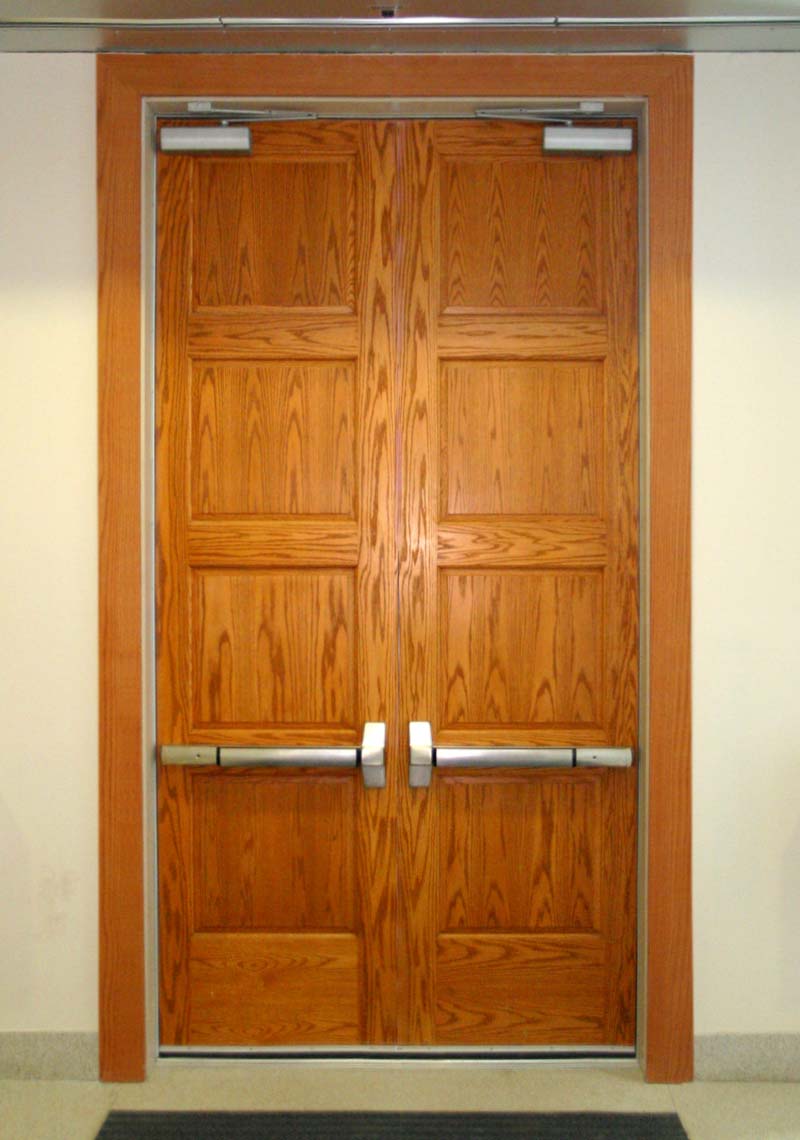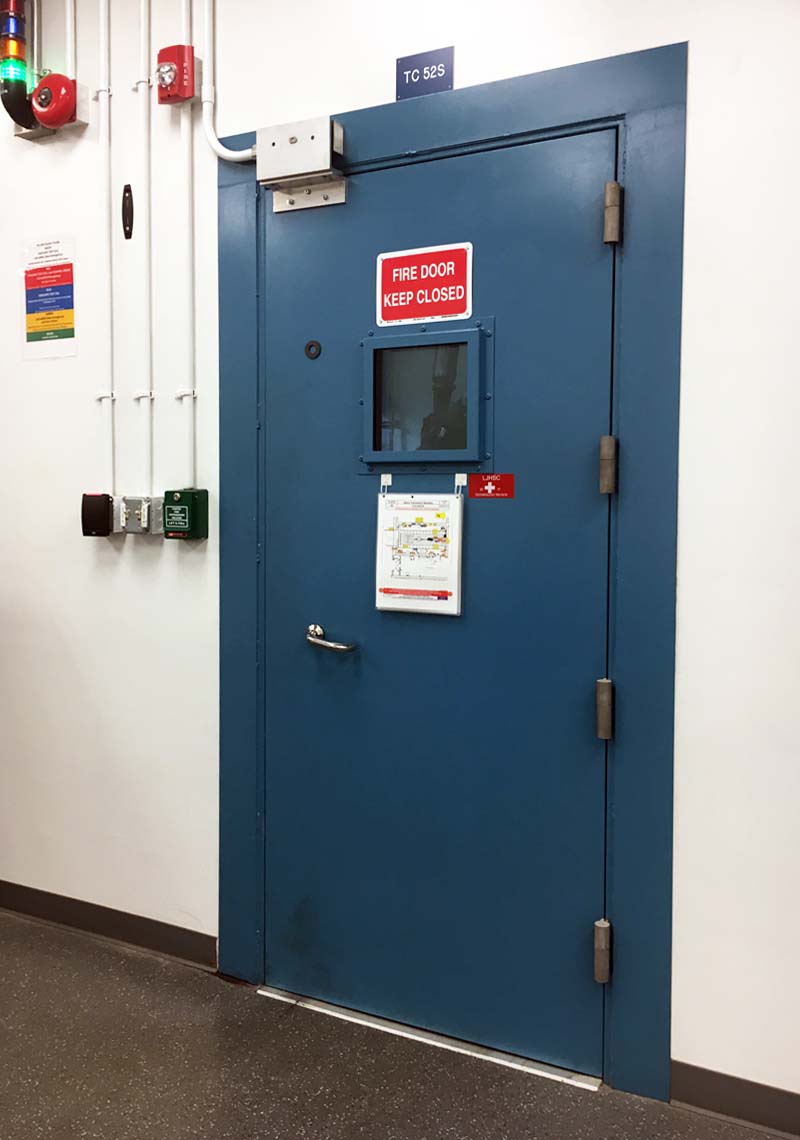The Lowdown on Blast Doors
Learn how blast doors work, how they are specified, and what government standards apply to them.
Blast protection doors have been around since the invention of gunpowder. Commercially manufactured blast doors, however, were only introduced to the market in the 1950s. It was the Cold War era and for obvious reasons the scientific communities took a real interest in the physics of explosions.
Since then, the study of blast hazards and the means to mitigate them has expanded rapidly. So fast, in fact, it has spawned an entire engineering field dedicated to developing protection against blasts and explosions.
Pressure ratings are specified by certified engineers expertly trained in calculating the anticipated trajectories, distances, and blast forces expected from various types of hazards. Typically given in PSI (pounds per square inch) or PSF (pounds per square foot), pressure ratings determine the construction and design of a blast assembly. Blast doors with PSI ratings of 6 or higher are referred to as high-range blast door assemblies. Medium-range blast assemblies offer PSI ratings of 4-5, and low-range blast assemblies are those that offer PSI ratings of 1-3.
To illustrate how PSI ratings translate to the total pressure a door is expected to withstand, let’s examine an assembly specified 36 x 84 inches in size with a PSI rating of 3. In this example, we will consider the pressure “static,” meaning the pressure is continuous and uniformly applied to the entire door.
Because the total pressure is determined by multiplying the square-inch surface area of the door by the PSI rating, this assembly would have to be constructed to withstand 9,072 pounds of pressure (3,024 sq in x 3). If the dimensions of the door increase just slightly to 48 x 96 inches with the same specification of 3 PSI, the door would now have to be constructed to withstand 13,824 pounds of pressure.
Frames are also manufactured using steel and their configurations are determined by door thickness and the specific wall anchors utilized. Because frames must transfer blast pressure to the walls, low-to-medium blast-rated frames are engineered to be anchored to typical wall materials such as a tube stud, block, or concrete. High blast ratings, on the other hand, will likely require frames to be anchored to embedded steel channels or installed within the wall during the concrete pour with anchor bars of various diameters.
The choice of blast door hardware depends on whether the pressure will seat the door into the frame or unseat it against the hardware, and whether latching will be required to hold all or a portion of the pressure. This is determined by considering the rebound scenarios set forth in the specifications.
Typically, the rebound resistance of the hardware is half the peak pressure the door is expected to withstand. High blast ratings typically require custom-designed hardware, but “off-the-shelf” hardware can be modified for use with low and medium ratings. Locksets can then be specified as either manual or power operated depending on the anticipated blast hazard.
Since then, the study of blast hazards and the means to mitigate them has expanded rapidly. So fast, in fact, it has spawned an entire engineering field dedicated to developing protection against blasts and explosions.
How Blast Doors Work
How do blast doors work? While the physics explanation would overwhelm even the most intellectual minds, a workable understanding can be achieved by examining three factors:
- Pressure ratings and basic mathematics
- The components and construction of a blast door assembly
- The standards that guide the industry
Pressure ratings are specified by certified engineers expertly trained in calculating the anticipated trajectories, distances, and blast forces expected from various types of hazards. Typically given in PSI (pounds per square inch) or PSF (pounds per square foot), pressure ratings determine the construction and design of a blast assembly. Blast doors with PSI ratings of 6 or higher are referred to as high-range blast door assemblies. Medium-range blast assemblies offer PSI ratings of 4-5, and low-range blast assemblies are those that offer PSI ratings of 1-3.
To illustrate how PSI ratings translate to the total pressure a door is expected to withstand, let’s examine an assembly specified 36 x 84 inches in size with a PSI rating of 3. In this example, we will consider the pressure “static,” meaning the pressure is continuous and uniformly applied to the entire door.
Because the total pressure is determined by multiplying the square-inch surface area of the door by the PSI rating, this assembly would have to be constructed to withstand 9,072 pounds of pressure (3,024 sq in x 3). If the dimensions of the door increase just slightly to 48 x 96 inches with the same specification of 3 PSI, the door would now have to be constructed to withstand 13,824 pounds of pressure.
Blast Door Assemblies
The door, frame, and hardware all work together to achieve a designated PSI rating. To ensure a solid working unit, the exterior of a blast door is manufactured out of cold-rolled steel sheets, while the interior support systems are comprised of either “hat sections” or “structural tubing,” constructed out of carbon steel. Hat sections are in the shape of a hat and structural tubing is in the shape of a square or a rectangle. Determining which interior structural shape to use depends on the size of the door, the PSI required, and the engineering specifications.
Frames are also manufactured using steel and their configurations are determined by door thickness and the specific wall anchors utilized. Because frames must transfer blast pressure to the walls, low-to-medium blast-rated frames are engineered to be anchored to typical wall materials such as a tube stud, block, or concrete. High blast ratings, on the other hand, will likely require frames to be anchored to embedded steel channels or installed within the wall during the concrete pour with anchor bars of various diameters.
The choice of blast door hardware depends on whether the pressure will seat the door into the frame or unseat it against the hardware, and whether latching will be required to hold all or a portion of the pressure. This is determined by considering the rebound scenarios set forth in the specifications.
Typically, the rebound resistance of the hardware is half the peak pressure the door is expected to withstand. High blast ratings typically require custom-designed hardware, but “off-the-shelf” hardware can be modified for use with low and medium ratings. Locksets can then be specified as either manual or power operated depending on the anticipated blast hazard.






